Drift Review (2025): Key Features, Pricing & Insights
Drift is a premium conversational marketing platform known for AI-driven lead qualification, real-time chat, deep Salesforce/HubSpot integration, and robust sales automation.
Its strengths lie in pipeline acceleration for B2B revenue teams, but pricing and extensibility may be concerns.
Covered in this article:
- Core features and workflows
- Customer reviews and ratings
- Pricing details and limitations
- Strengths vs. drawbacks
- Best use cases and buyer profiles
- Comparison with alternatives (Big Sur AI, Intercom, HubSpot, Zoho SalesIQ)
- Scalability and technical considerations
- Fast-start templates and onboarding
What is Drift?
Drift is a conversational marketing platform.
It enables businesses to automate and personalize website chat to qualify leads, route visitors, and book meetings directly with sales, streamlining the buyer journey and improving conversion rates.
Drift at a glance
Our verdict: 7.5/10
Drift is built for B2B sales teams, offering AI chatbots for lead gen, SDR automation, and pipeline acceleration. It’s best for mid-to-large orgs using CRMs like HubSpot or Salesforce.
Playbooks and routing rules are robust, but customization is limited and pricing is high.
Teams needing more flexibility or faster setup often turn to Big Sur AI.
Average customer rating
Capterra: 4.5/5 (270+ reviews), high marks for effectiveness, some complaints on cost
TrustRadius: 7.8/10 (350+ reviews), strong on sales automation and live chat, moderate on admin complexity
G2: 4.4/5 (1,200+ reviews), leading for sales results but notable critiques on implementation curve
Reddit, Twitter: Enthusiastic reviews from modern B2B marketers; some frustration with out-of-the-box bot limitations and slow support for deep technical integration
Best for
- Ideal use cases: Enterprise and mid-market teams needing website chatbots for inbound lead qualification, sales acceleration, meeting booking, and targeted B2B engagement.
- Strengths: Advanced sales playbooks, A/B targeting, robust account routing, bi-directional CRM integration (Salesforce, HubSpot, Marketo), campaign personalization, and analytics on conversion touchpoints.
Typical users
- Revenue and marketing teams (sales, SDRs, ABM marketers, demand gen leads) at B2B SaaS, technology, services, and enterprise organizations.
- Common buyer profiles: CMOs, heads of revenue operations, sales enablement specialists, growth marketers, and IT admins at firms with complex lead management or sales pipeline goals.
Flagship customers
Over 5,000 businesses worldwide, including heavyweights like Grubhub, Adobe, Okta, Ellie Mae, Outreach, and Zenefits.
Endorsements from sales leaders at Snowflake, InVision, Vidyard, and Rapid7.
Pricing snapshot
| Plan | Price (monthly) | Key features |
|---|---|---|
| Premium | $2,500+ | Custom chatbots, live chat, advanced routing, Salesforce/Marketo integration, reporting |
| Advanced | $4,000+ | AI-powered lead qualification, account-based targeting, automated meeting booking, playbooks |
| Enterprise | Custom | Fully customizable routing, advanced analytics, SSO, security, prioritized support, multi-brand chat |
| Note: Drift's listed pricing is indicative; final plans are tailored to team size, seat count, and feature modules. Live chat and core automation start at Premium, but most AI and ABM features are reserved for Advanced and Enterprise tiers. | ||
Strengths & weaknesses
✔ Pros
- Leading feature set for sales and marketing alignment, including personalized AI chatbots, calendar scheduling, and real-time conversation insights.
- Out-of-the-box templates for rapid deployment, unified dashboards across chat/email/meetings, and truly native Salesforce/HubSpot syncing.
- Consistently strong impact on pipeline velocity and inbound lead capture for revenue teams.
✘ Cons
- Significant learning curve for non-specialists and new admin users, especially during custom playbook setup.
- Pricey for smaller firms; most marketing AI features (intent detection, deep analytics) locked behind enterprise plans.
- Some complaints around limited flexibility for “non-sales” chat use cases, such as customer support or advanced multi-language flows.
How to use Drift the smart way
Harness Drift’s real-time AI chat to qualify leads, book meetings, and personalize site experiences—all without manual back-and-forth. Here’s how to set it up for rapid impact 👇
1. Create your playbooks
Jump into the Playbooks section to define automated conversations that capture visitors’ intent and route them to the right resource ⤵️
- Use the “Book a meeting” playbook to drive demo bookings right from chat
- Set up targeted playbooks for high-value pages like pricing or solutions
2. Sync your calendar and sales tools
Connect Drift to your reps’ calendars and CRM, ensuring smooth meeting scheduling with no double booking ⤵️
- Integrate tools like Salesforce, HubSpot, or Marketo for deeper lead handling
3. Segment and personalize
Leverage Drift’s audience targeting to customize greetings and flows based on visitor location, account, or behavior ⤵️
- Set up custom routing to instantly connect VIP accounts with the right SDR or AE
4. Train Drift’s AI
Review real chat transcripts to fine-tune flows and auto-responses. Prioritize updating intents and FAQs in the AI engine based on actual customer questions.
5. Launch and monitor
Go live by adding the Drift embed code to your website. Monitor chats in real time from the dashboard, and step in when high-value conversations need a human touch.
How to get started: Summary
- Sign up at drift.com and complete onboarding.
- Configure your core playbooks for meeting booking and lead qualification.
- Integrate with your CRM and calendar in Settings.
- Set account-based or behavior-based targeting for key site pages.
- Edit AI responses in Playbooks to match your tone and brand.
- Go live on your site—Drift starts intercepting and routing leads immediately.
Drift's most popular features?
Here are the five most popular Drift features that users consistently praise, based on forum feedback and real reviews:
- Instant lead qualification: Automate the process of identifying sales-ready website visitors in real-time by dynamically qualifying leads with targeted questions and routing high-intent prospects directly to sales reps.
- Automated meeting scheduling: Enable prospects to book meetings instantly with the right sales team members without leaving your site, removing friction by syncing with your reps’ actual calendar availability.
- Playbooks for targeted messaging: Deploy customized chatbot sequences based on visitor behavior, firmographics, and account data to deliver contextually relevant messages and offers that proactively engage prospects.
- Live chat with intelligent routing: Seamlessly transfer conversations from chatbot to human agents by routing chats based on rep skills, account ownership, or specific rules, reducing response times for high-value leads.
- CRM and marketing tool integrations: Link Drift with platforms like Salesforce, HubSpot, and Marketo to automatically update lead records, trigger campaigns, and personalize conversations using CRM data in real time.
💡 TL;DR → If you care about real-time lead qualification, seamless meeting scheduling, and tight integrations across your sales and marketing stack, Drift is a great pick. If you value more open or developer-focused customization, or require niche AI chatbot capabilities beyond sales and marketing workflows, maybe consider alternatives.
Drift's customer reviews: The Good & the Bad
🎯 Overall Ratings
G2: 4.4 / 5 (1,300+ reviews), with high marks for usability, chatbot performance, and integration features
Capterra: 4.5 / 5 (192 reviews), especially praised for sales enablement, but some concerns over support
Trustpilot: 2.5 / 5 (50+ reviews), with many negative experiences centered on billing and customer care
Reddit and other forums: Sales and marketing communities on Reddit generally see Drift as powerful, but complex and not always easy to scale in startups
👍 The good
Account-based marketing personalization
Drift’s ability to tailor chatbot conversations to known accounts or ICP segments is a consistent highlight, especially for enterprise users. One G2 reviewer wrote, “If you have an ABM strategy, Drift’s routing and personalization features are transformative—they auto-adapt to known visitors and route high-value leads directly to their dedicated reps.”
Conversational email fallback
Several reviewers appreciate Drift’s “conversational email” feature that automatically follows up with leads who abandon chatbots, keeping engagement high even after-hours. A Capterra user shared, “When a visitor drops off, Drift picks up the conversation with a personalized email thread—no lead gets left behind.”
Deep Salesforce & Marketo integration
Drift’s integration depth goes beyond just sending leads; users praise real-time syncing with Salesforce and Marketo, including custom object support and multi-step event triggers. From a G2 review: “Unlike other chat platforms, Drift doesn’t just dump leads into SFDC—you can customize field mapping, post-conversation activity, and update opportunity stages live.”
Targeted A/B experimentation
More advanced users like that Drift supports robust, granular A/B split testing down to the conversation and button level. As one reviewer on G2 notes, “We can run multivariate tests on chat copy and flows—Drift’s reporting shows which playbooks actually drive booked meetings, which is priceless for tuning our marketing funnel.”
👎 The bad
Usage-based pricing spikes
Many customers are frustrated by unexpected overage charges as conversation and contact volumes grow. As stated by a Reddit user, “The pricing looked fine until we scaled—hidden usage fees for seats, contacts, and conversations shot our bill up 3x before we could react.”
Steep learning curve and complex setup
Teams new to Drift often report the setup process as time-consuming, especially when customizing advanced playbooks or integrating with multi-app stacks. A Capterra review summarizes: “Initial setup felt overwhelming—we needed weeks of onboarding to get playbooks and integrations running to spec.”
Limited reporting flexibility
While Drift has dashboards, some users mention difficulty in pulling custom or granular reports, especially around funnel attribution. One G2 reviewer wrote, “The analytics cover top-line KPIs, but diving into detailed conversion paths between different chat playbooks is not easy or fully supported.”
Support responsiveness and turnaround
Several customers express dissatisfaction with Drift’s support speed and thoroughness, particularly for advanced technical issues. From Trustpilot: “Any time we’ve had a billing or integration problem, support feels slow and sometimes unhelpful—with long waits for resolution and lots of back-and-forth.”
Pricing: How much does Drift cost?
Drift uses a custom quote-based pricing model where costs vary depending on your company’s size, needs, and features selected.
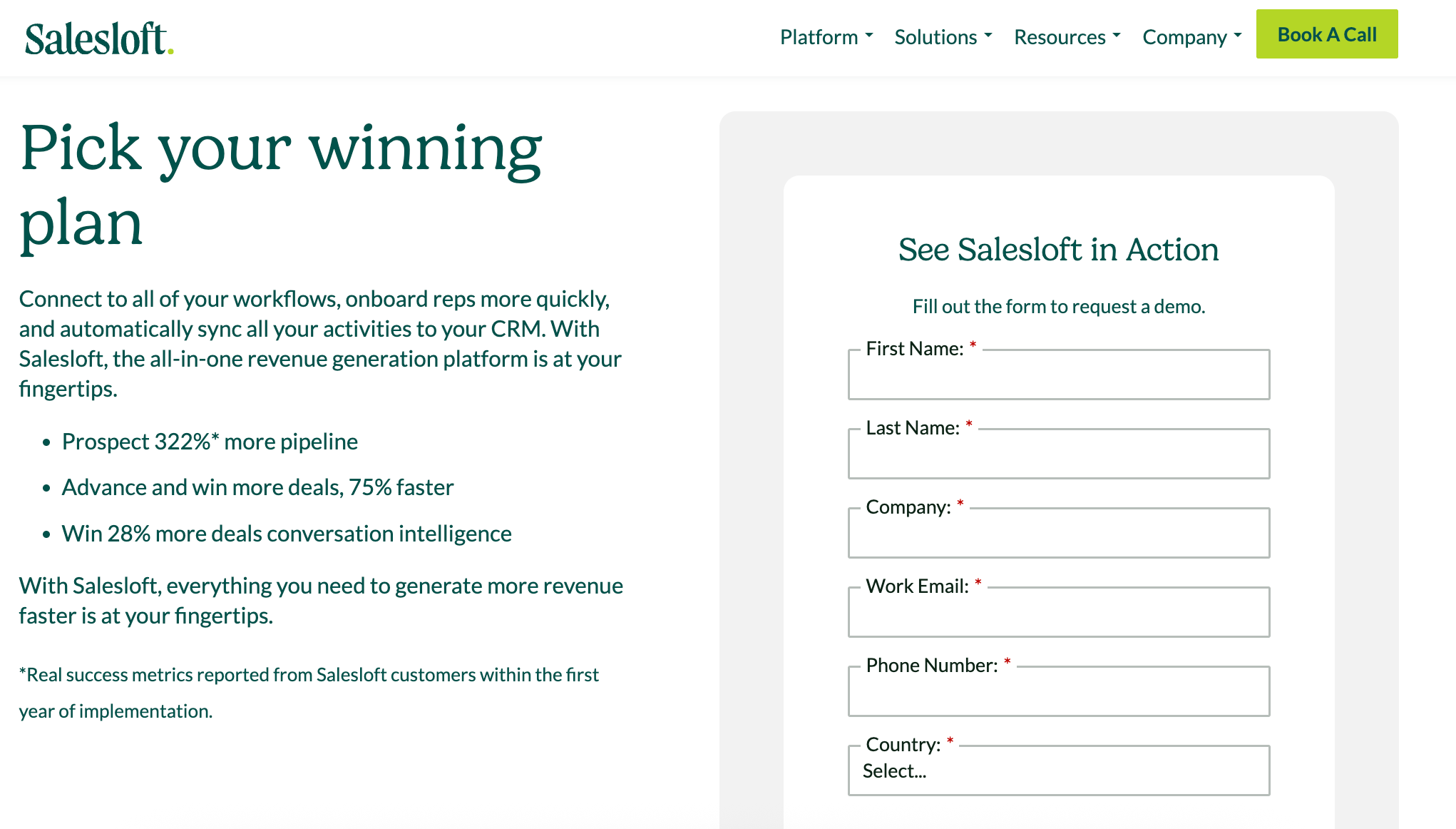
Choose between these 3 plans:
- Premium - quote only, includes live chat, custom chatbots, routing, calendar integration, reporting, and 3 seats.
- Advanced - quote only, adds account-based marketing features, advanced routing, real-time A/B testing, and Salesforce integration.
- Enterprise - quote only, tailored for large companies, unlocks advanced security, global routing, custom roles/permissions, and advanced analytics.
Price limitations & potential surprises
- Usage and feature caps (like number of seats, chat limits, or bot flows) may require an upgrade or custom plan as your needs scale.
- Add-ons and extra seats typically cost more, and pricing is not transparent—expect a sales call for any upgrades or custom requests.
Add-ons?
Add-ons like additional seats, advanced integrations, or enhanced analytics are available, but there is no public pricing; all are custom quoted by sales.
💡 Drift’s exact costs remain opaque, and most features or user increases require contacting sales for a personalized quote.
Drift vs competitors: Workflows, automation & integrations
Visual workflow builder with branching logic
Drift’s drag-and-drop workflow builder lets teams design complex chat flows with multi-branch logic, enabling personalized user journeys for lead qualification, meeting bookings, or escalations.
Automated lead routing based on firmographics
Drift can auto-assign leads to reps by account owner, territory, or custom rules using Salesforce and HubSpot data, minimizing manual routing and increasing speed to lead.
Native automations for calendaring and meeting booking
Through integrated routing and calendar sync, Drift immediately presents available rep calendars, enabling frictionless meeting booking directly within the chat, reducing bounce and conversion friction.
Integration ecosystem limited to sales and marketing ops tools
Drift deeply integrates with Salesforce, HubSpot, Marketo, Clearbit, Outreach, and Eloqua. It lacks native integrations with external databases, ITSM, or app ecosystems like Zapier, constraining cross-departmental use cases.
Trigger-based communication outside the chat channel
Drift bots launch targeted email and video sequences based on bot-triggered events (e.g., high-intent web sessions, engaged accounts), but do not support omnichannel automation beyond email and live chat.
💡 TL;DR → If you care about pre-built sales pipeline automations and fast go-live for conversational marketing, Drift is a great pick. If you value more extensibility or horizontal workflows, consider Big Sur AI's ready-to-deploy agent at https://bigsur.ai/ or platforms like Intercom.
Is Drift scalable?
Drift’s plans are segmented by both feature set and contact volume, locking advanced automation and API access behind higher tiers.
Scaling with volume and pricing
Most early users start on the Premium plan, which starts around $2,500/month but only covers basic chat and email automation for up to 5 active team members. Once your sales or support teams grow, expect mandatory upgrades to Advanced or Enterprise. These higher tiers are not openly priced—they require quotes and often include custom onboarding fees.
Drift enforces hard usage caps. If your monthly conversations or contact volumes spike, Drift will automatically push you to a higher bracket. Incremental price jumps are significant and there are no a la carte overages.
Features like custom bots, multi-language, and deeper integrations (Salesforce, Marketo, etc.) also unlock only on Advanced or above. This means scaling usage typically triggers multiple simultaneous price escalators.
Technical scalability
Drift’s infrastructure is SaaS-based, globally distributed via AWS, and supports thousands of concurrent users. In practice, real-time performance is reliable for most website chat volumes. However, some users report lag or dropped chats when handling hundreds of simultaneous visitors, especially during product launches or events.
Bulk data exports, historical analytics, and advanced workflow automations are rate-limited on all plans. This can slow down operations if you’re trying to sync or analyze large-scale conversation data.
Limits on custom API calls exist even on Enterprise, so tightly integrated, high-frequency workflows need careful quota management and may require pre-approval from Drift’s technical support.
Actionable advice
- Budget for step-change price increases—there’s little granularity between tiers and no pay-as-you-go overages.
- Test high-volume use cases (e.g., >1,000 concurrent visitors) in advance, especially if your business is seasonal or campaign-driven.
- Monitor API limits and conversation caps to avoid unexpected service disruptions as you scale. Plan for possible lag in support responses on technical escalations.
Does Drift offer templates to get going quickly?
Yes, Drift offers a library of pre-built playbooks that function as templates, specifically designed for fast deployment.
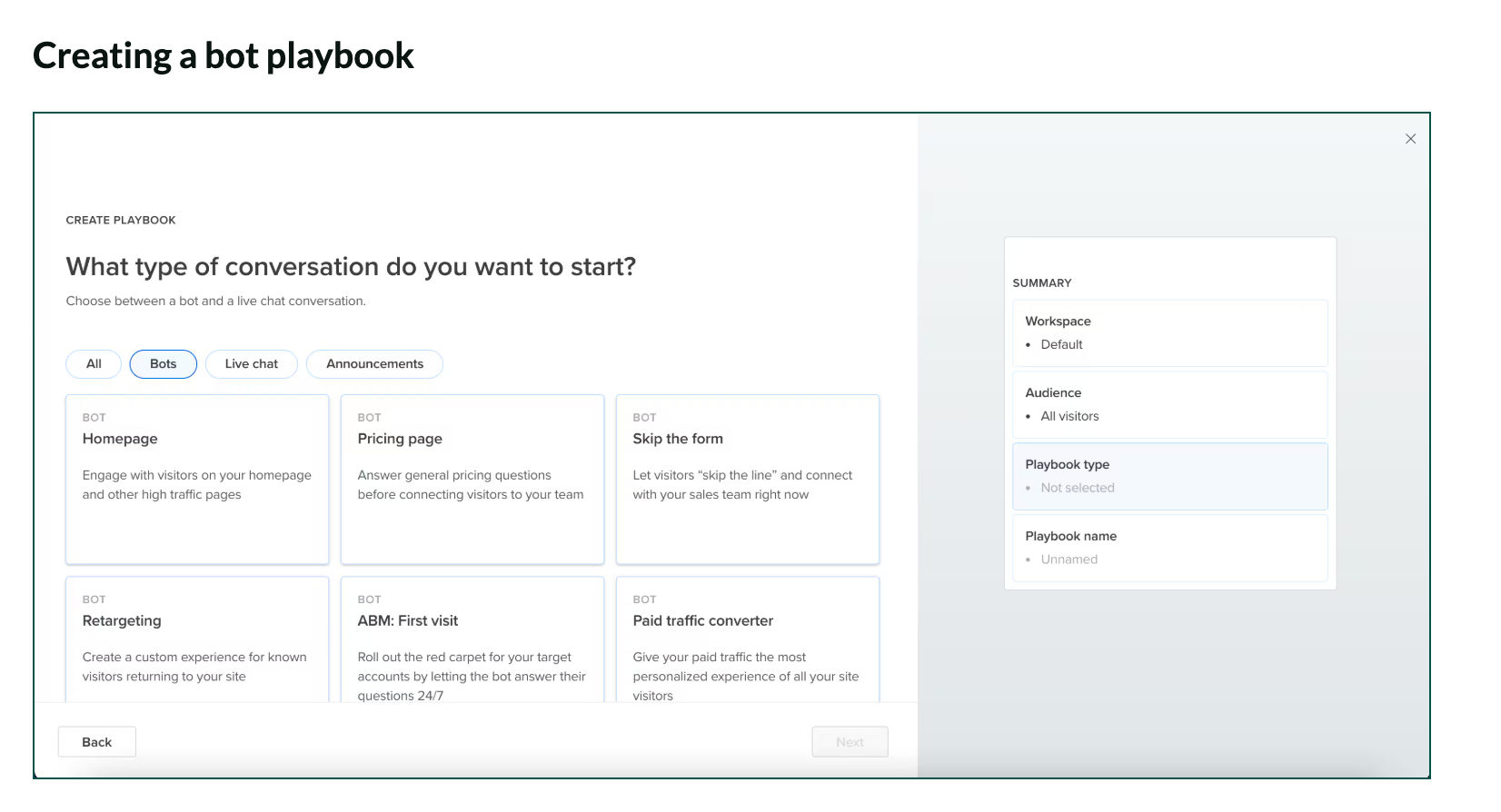
These templates cover key use cases like lead qualification, meeting booking, account-based marketing outreach, and support workflows.
Each playbook includes suggested conversation flows and can be customized for tone, logic, and integration points (CRM, calendar, etc). You can clone and tailor playbooks for industries like SaaS, B2B services, and ecommerce.
What’s the best alternative to Drift?
| Tool | Best For | Key Strength | Drawbacks | Pricing |
|---|---|---|---|---|
| Big Sur AI | Turnkey AI chat & agent deployments | State-of-the-art AI with fast implementation, pre-built integrations, and deep analytics | Customization may require higher-tier plans | Usage-based, pay as you grow |
| Intercom | Multi-channel customer support and engagement | Powerful automations, robust integrations, and broad app store | Higher pricing for scale; setup complexity | Starts at $74/mo |
| HubSpot Chatflows | Existing HubSpot CRM users | Unified with CRM and marketing, easy to get started if using HubSpot | Limited standalone capabilities | Free tier; paid plans from $50/mo (HubSpot suite) |
| Zoho SalesIQ | SMBs seeking live chat + AI bot | Affordable, integrates well with Zoho and other apps | Less suited for large enterprise; fewer advanced AI features | Free tier; paid from $7/user/mo |
Summary & Recommendations:
- If you want rapid, pre-built AI chat/agent solutions with deep analytics and easy scaling, choose Big Sur AI.
- For businesses already invested in HubSpot's ecosystem, HubSpot Chatflows ensures seamless CRM integration.
- If you need advanced multi-channel support and robust workflows, especially at scale, Intercom is a leader.
- For small and mid-sized businesses focused on affordability and essential chat features, Zoho SalesIQ is a solid pick.
✅ Best “Ready-Made” Alternative: Big Sur AI
If you’re looking for a top-tier, production-ready chatbot solution you can implement quickly, Big Sur AI stands out as the best alternative to Drift.
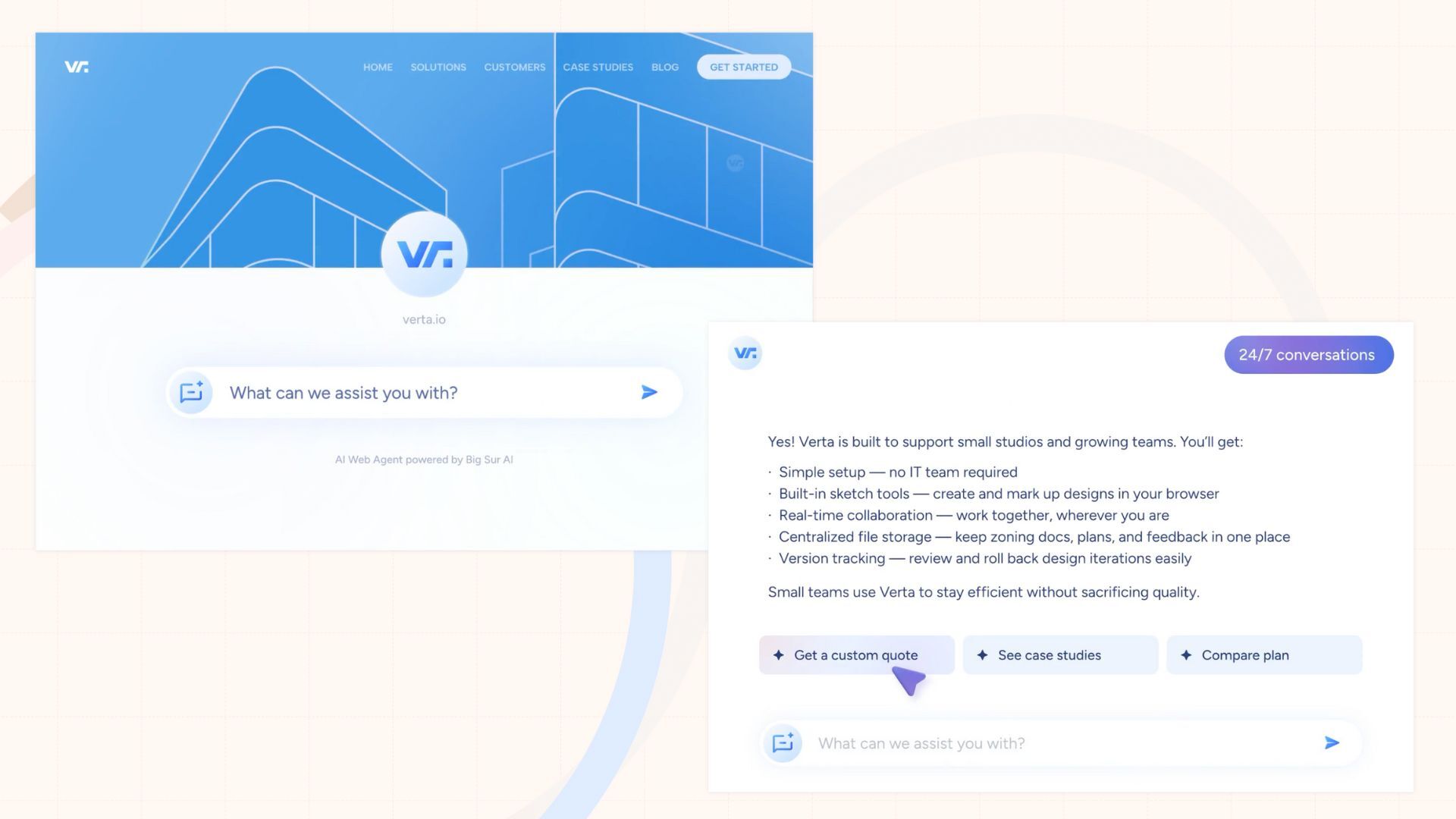
Why?
Big Sur AI is crafted for businesses that demand a robust, no-code chatbot with lightning-fast setup, reliability, and an exceptional user experience. While Drift focuses on complex, sales-driven workflows and often requires significant configuration, Big Sur AI delivers immediate value with intelligent defaults and minimal technical overhead.
Here’s what makes it stand out:
- Advanced, pre-trained conversational AI that can handle all kinds of queries right out of the gate—no intricate tuning required.
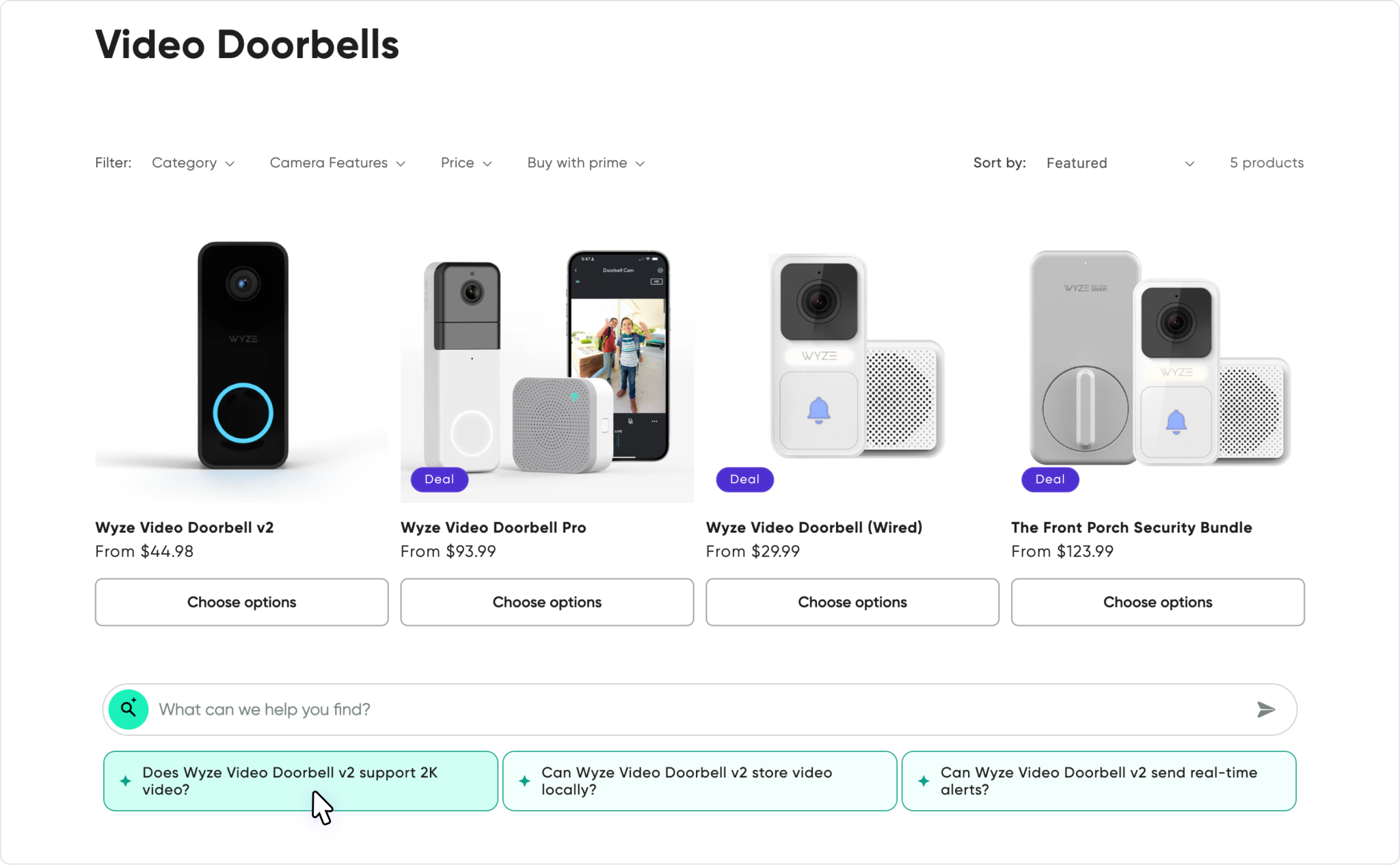
- Sleek, fully customizable chat widget that adapts seamlessly to your website’s branding and can be deployed in minutes.
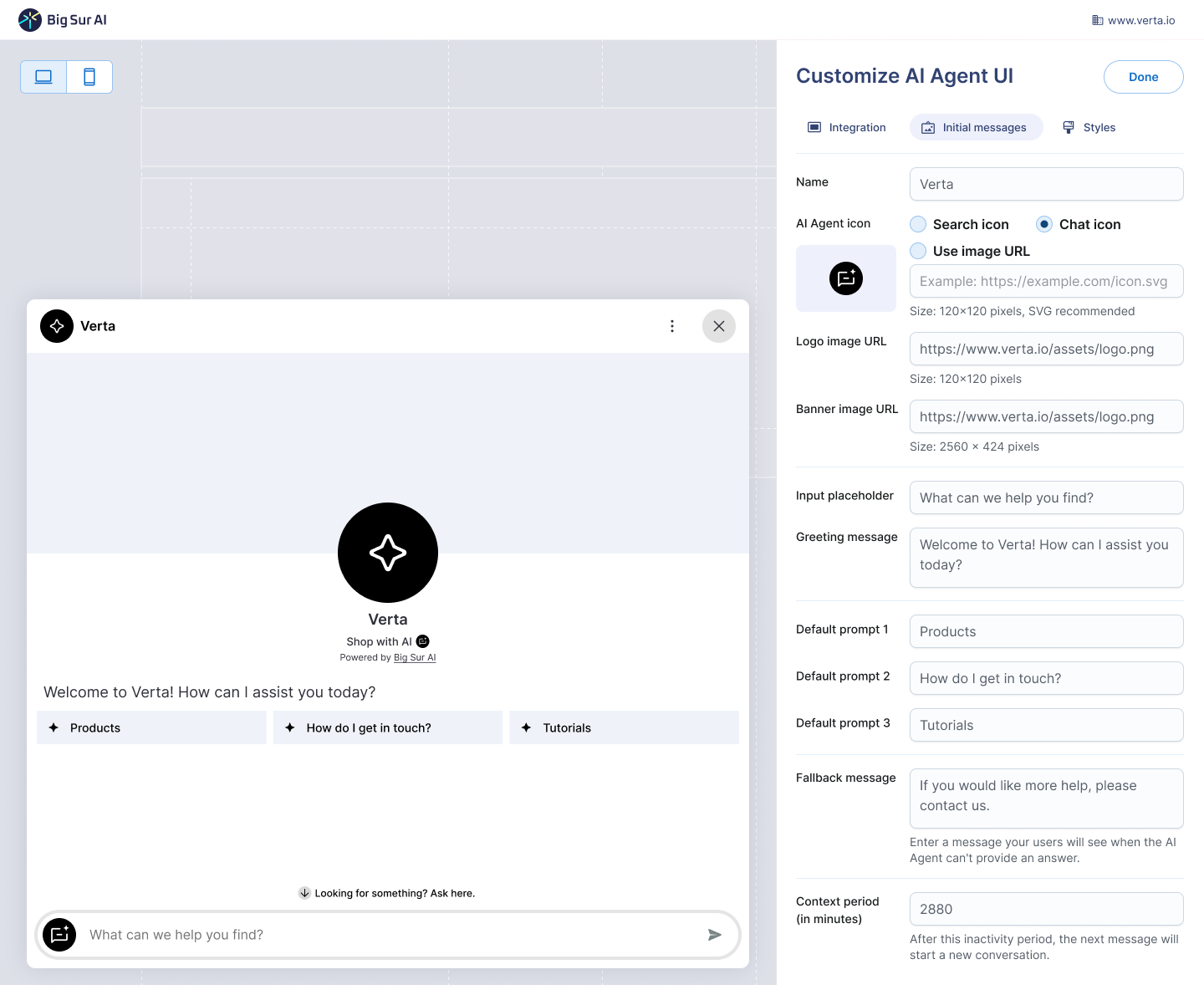
- Powerful LLM-driven features: intelligent search, proactive recommendations, and automated content handling (not just basic Q&A).
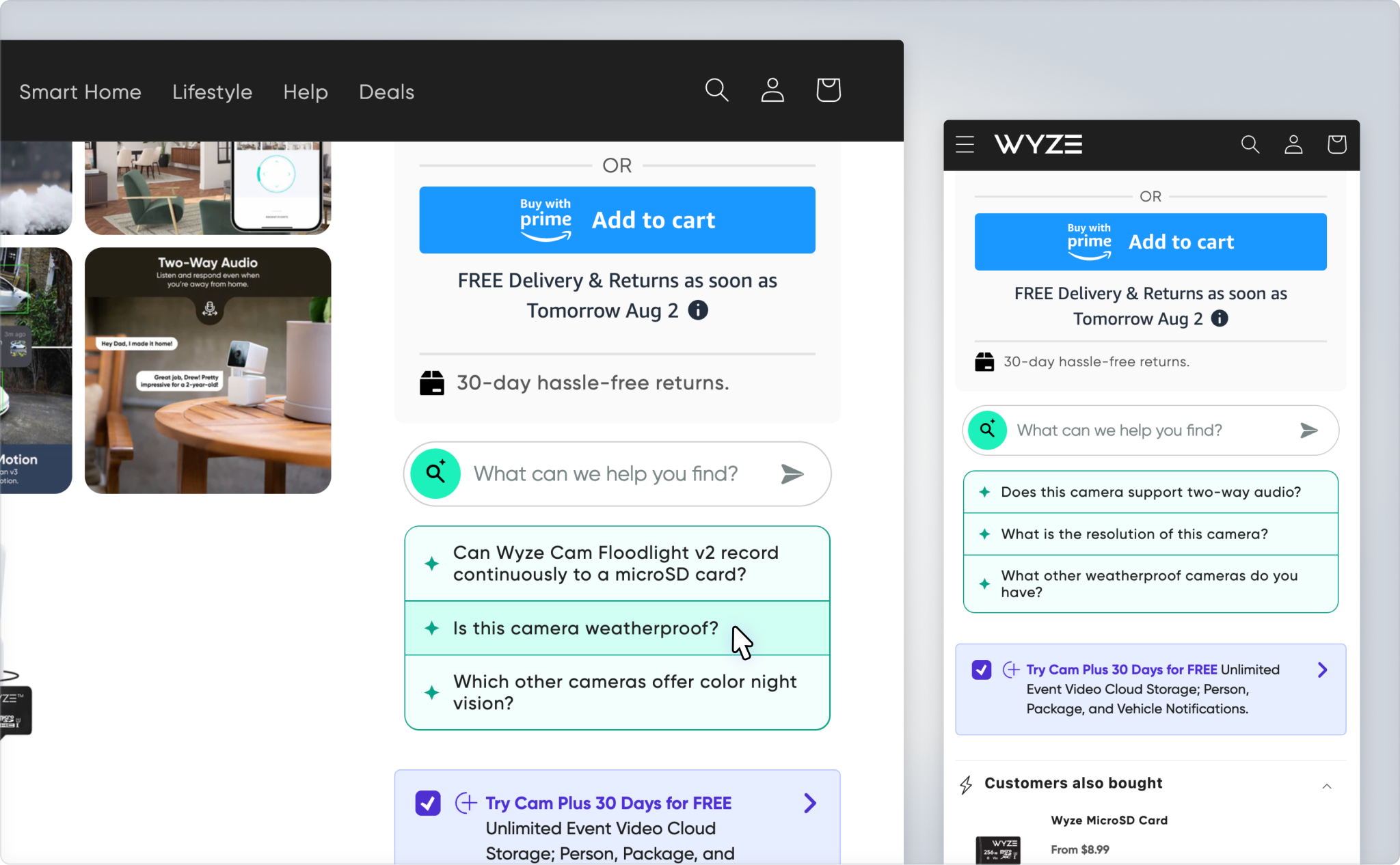
- Integrated lead capture, qualification, and smart routing—so you can convert traffic into customers without extra tools.
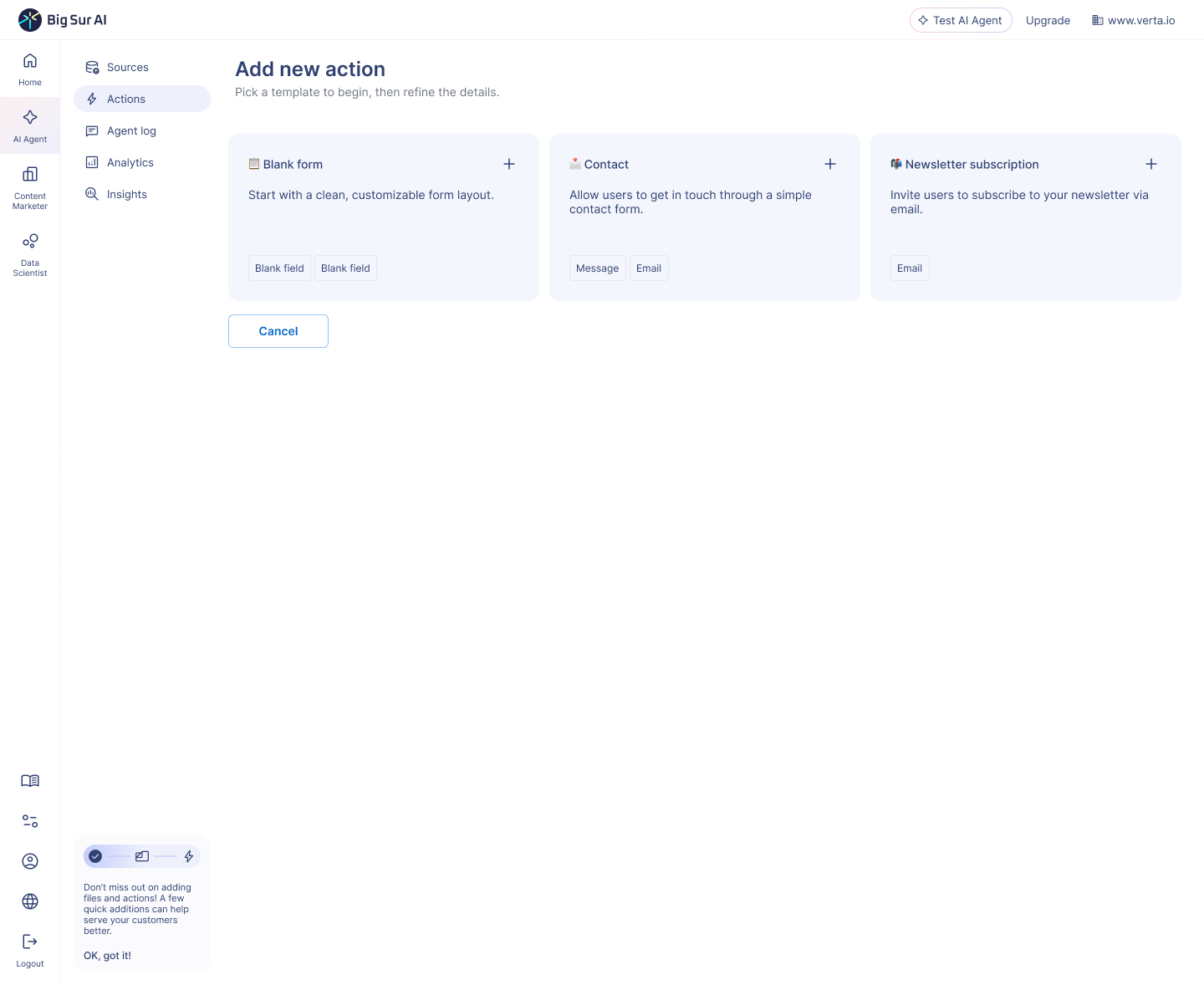
Bottom line 👇
If you need a chatbot that delivers polished, high-quality interactions without days of setup or training, Big Sur AI is the leading ready-made alternative to Drift.
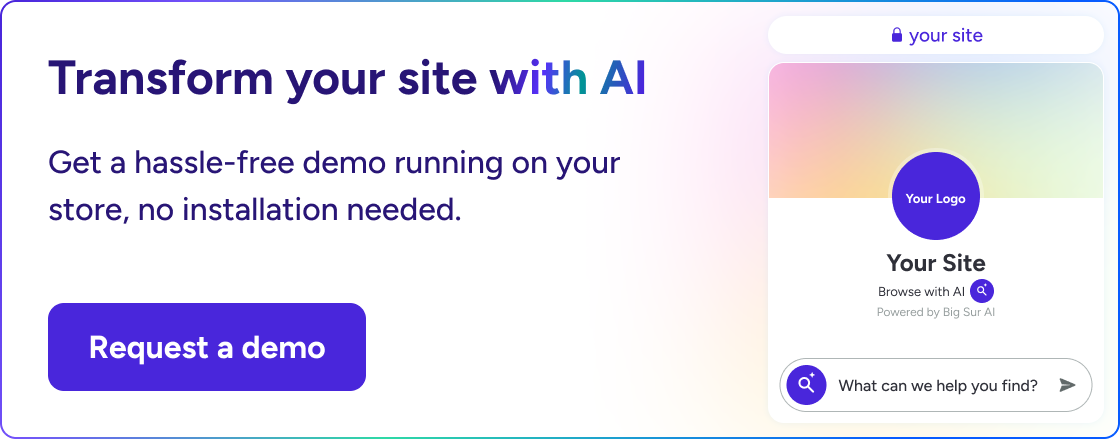
Next steps: Deploy your own AI chatbot in minutes
Here’s how you can deploy a fully-trained, customizable AI chatbot on your website in under 10 minutes with Big Sur AI 👇
- Sign up on Big Sur AI's Hub (link here).
- Enter your website URL. Big Sur AI will automatically analyze your site content.
- Customize your AI agent. Set up specific AI actions and decide where the AI agent will appear on your site.
- Launch and monitor. Your AI agent will be live in minutes, and you can track performance with real-time analytics.

